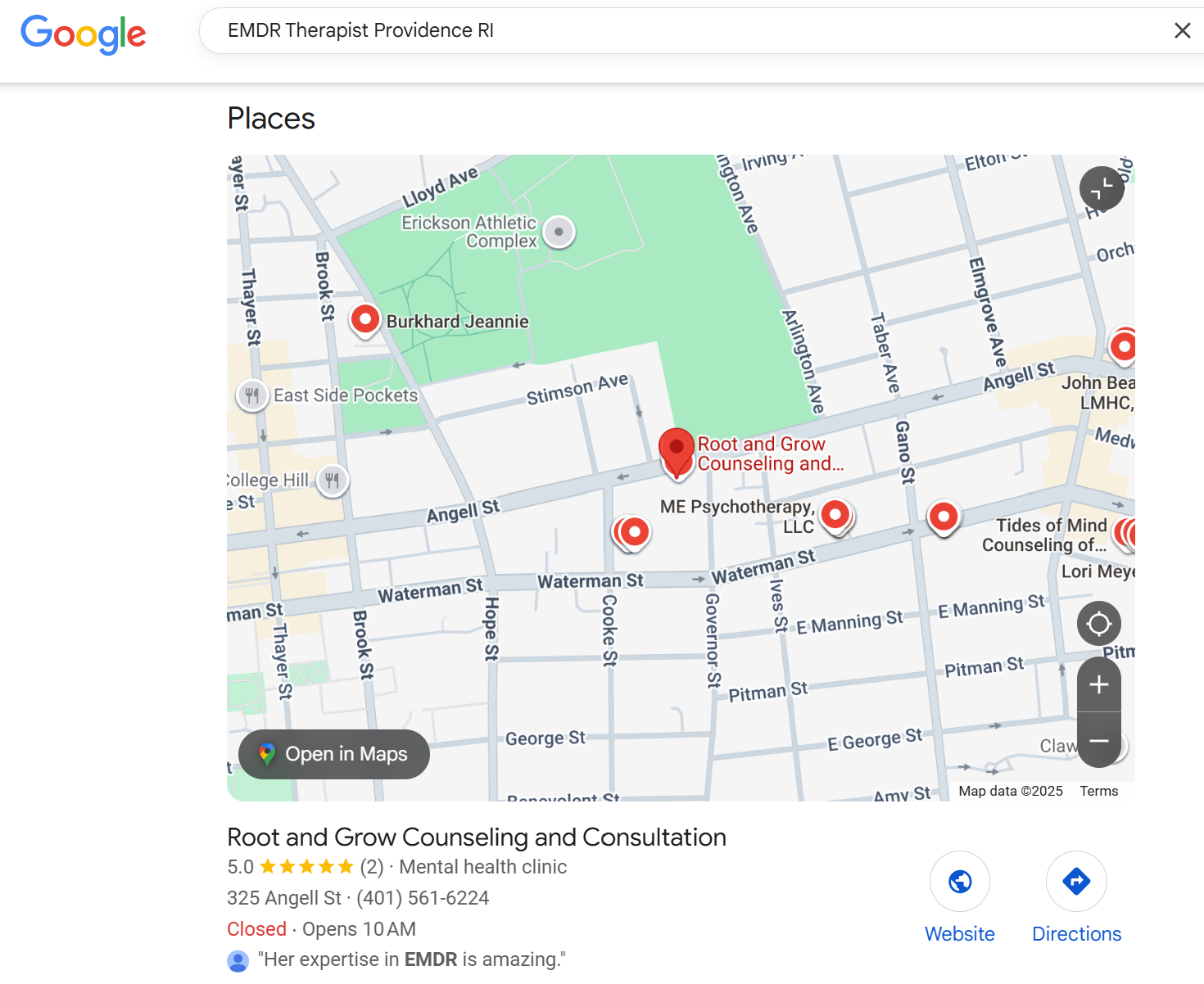Most clinicians have parts that long to be seen and other parts that fear being exposed. A website can hold both truths.
When people search for therapy today, their searching parts don’t turn to the phone book.
They type into Google:
“Therapist near me”
“Marriage counseling in New Orleans”
"EMDR practice in Dallas"
“Anxiety therapy online”
If your practice doesn’t have a
website, you remain invisible to those searches—no matter how much you have prepared in your practice.
A site becomes a 24/7 doorway into your practice. It welcomes the part of a potential client awake at 2:00 AM with anxiety, or the part that finally feels ready during a quiet lunch break.
✨ Reflection Prompt:
What part of you resists being visible online?
What part of you is longing to be found?

Your clients bring vulnerable, protective, and anxious parts with them to your site.
Your website is their first impression of you—and it sets the tone for whether they’ll reach out. It could be the images you use, the language in your headlines, or simply Uthe colors on the screen. Whatever it is, it is their first impression of YOU!
A calm, clear, and professional site communicates:
You can trust me. This space is safe.
Your website is also the place to share your therapist story. Not just credentials, but why you felt called into this work, the modalities that speak to you (IFS, EMDR, CBT, etc.), and the kinds of clients you work best with. This helps clients self-select and reassures them that their parts will be seen and understood.
Even small touches—testimonials, success stories, or compassionate language—help soothe the parts of potential clients that feel nervous or uncertain about starting therapy. These trust elements are often the reason people stay and dig further.
✨ Reflection Prompts:
What story would you want to tell clients before the first session?
How might sharing your “why” help clients trust you more deeply?
Therapy is relational. Clients want to know that you are not only qualified but also a good fit for them.
Your website is the bridge between their protective parts and your calm presence. By sharing your philosophy and approach in everyday language—not clinical jargon—you give potential clients a spark of connection: Yes, this therapist feels like someone who could get me.
And clarity builds safety. When your site answers questions like rates, insurance, or scheduling upfront, it reduces confusion and helps potential clients feel secure. That makes it easier for them to move from “interested” to “ready to begin.”
✨ Reflection Prompt:
What parts of your story feel most important to share?
What parts of a client’s journey do you want to speak to most directly?
Your clients bring vulnerable, protective, and anxious parts with them to your site.
"When our different parts feel supported, we have more space for Self. The same is true for a practice—when your website holds the practical parts, your healing parts are free to do their work."
Running a practice calls on many parts: the healer, the administrator, the marketer, the planner, the janitor, the office manager, the collections agent, general question "answer-er".
Sometimes those parts get overwhelmed. A website can help carry the load.
- Automating Intake: Digital forms let your manager part relax and give your client a smoother entry into therapy.
- Scheduling Online: Tools that allow clients to book themselves free you from phone tag and let your practical parts rest.
- Scaling Your Reach: Blogs, infographics, prompt sheets, resources, and workshops allow your teaching parts to step forward, sharing wisdom without adding more 1:1 sessions to your calendar.
When your website works well, it doesn’t just grow your practice—it creates more space for your Self and your healing work.
✨ Reflection Prompt:
What part connected to your practice feels most weighed down by admin tasks?
How could a website free that part to rest?
Social media platforms change. Referral directories shift. But your website is your digital home, your online foundation and it belongs to you.
Think of it as the hub of a wheel. The spokes (Psychology Today, Instagram, referrals, etc.) all connect back to the hub, where clients get the clearest, most authentic reflection of your practice.
As your practice grows and evolves—adding new services, shifting into telehealth, or welcoming new therapists—your site can grow with you.
Unlike a brochure or a static profile, it’s a living expression of your practice.
✨ Reflection Prompt:
What parts of your practice are asking for a more stable home?
How might owning your online presence give those parts more ease?

Every therapist has parts that are excited about growth, parts that feel hesitant about technology, and parts that want everything to be perfect.
Your website can hold all of that. It can be built in alignment with your values, at a pace that feels right, and with support when you need it.
At
Parts of Practice, we believe your website should feel like an extension of your Self—calm, clear, and connected. Because when your practice grows in alignment, your impact grows too.
✨ Closing Reflection Prompt:
What part of you feels most curious about creating or refreshing your website right now?



